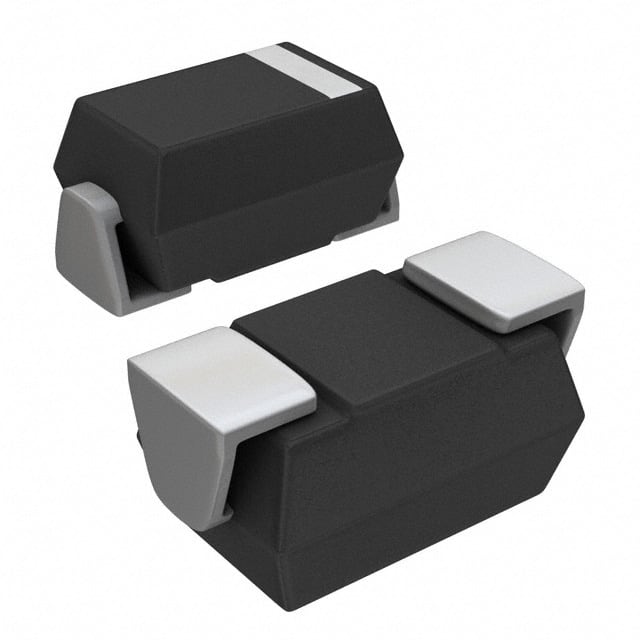Viz Specifikace pro podrobnosti o produktu.

ES1D-TP Diode
Product Overview
The ES1D-TP diode belongs to the category of semiconductor devices and is commonly used in electronic circuits for rectification and voltage regulation. This diode is characterized by its high efficiency, low forward voltage drop, and fast switching speed. It is typically packaged in a small, surface-mount package and is available in various quantities per package.
Basic Information
- Category: Semiconductor device
- Use: Rectification and voltage regulation in electronic circuits
- Characteristics: High efficiency, low forward voltage drop, fast switching speed
- Package: Surface-mount package
- Essence: Efficient rectification and voltage regulation
- Packaging/Quantity: Available in various quantities per package
Specifications
- Maximum Reverse Voltage: 100V
- Average Forward Current: 1A
- Peak Forward Surge Current: 30A
- Operating Temperature Range: -65°C to +150°C
- Storage Temperature Range: -65°C to +175°C
Detailed Pin Configuration
The ES1D-TP diode has a standard surface-mount package with two pins. The pin configuration is as follows: - Pin 1: Anode - Pin 2: Cathode
Functional Features
- Fast switching speed
- Low forward voltage drop
- High efficiency rectification
- Reliable voltage regulation
Advantages and Disadvantages
Advantages
- Fast switching speed allows for efficient circuit operation
- Low forward voltage drop minimizes power loss
- High efficiency contributes to energy savings
Disadvantages
- Limited maximum reverse voltage compared to some alternative models
- Relatively lower peak forward surge current rating
Working Principles
The ES1D-TP diode operates based on the principles of semiconductor junction behavior. When forward-biased, it allows current flow with minimal voltage drop, enabling efficient rectification. In reverse bias, it blocks the flow of current, serving as a voltage regulator.
Detailed Application Field Plans
The ES1D-TP diode finds extensive use in various electronic applications, including: - Power supply units - Voltage regulators - Switching circuits - LED lighting systems - Automotive electronics
Detailed and Complete Alternative Models
Some alternative models to the ES1D-TP diode include: - 1N4001: A general-purpose rectifier diode with higher maximum reverse voltage - 1N5819: Schottky diode with lower forward voltage drop - UF4007: Ultrafast rectifier diode with higher peak forward surge current
In conclusion, the ES1D-TP diode offers efficient rectification and voltage regulation in electronic circuits, making it suitable for a wide range of applications. While it has certain limitations in terms of maximum reverse voltage and peak forward surge current, its high efficiency and fast switching speed make it a popular choice for many electronic designs.
[Word count: 411]
Seznam 10 běžných otázek a odpovědí souvisejících s aplikací ES1D-TP v technických řešeních
What is ES1D-TP?
- ES1D-TP is a software tool used for simulating and analyzing transient electromagnetic problems in technical solutions.
How does ES1D-TP help in technical solutions?
- ES1D-TP helps in understanding the behavior of electromagnetic fields, currents, and voltages in complex systems, aiding in the design and optimization of technical solutions.
What types of technical solutions can ES1D-TP be applied to?
- ES1D-TP can be applied to a wide range of technical solutions including power systems, communication systems, electronic devices, and electromagnetic compatibility analysis.
Is ES1D-TP suitable for simulating transient electromagnetic events?
- Yes, ES1D-TP is specifically designed to simulate and analyze transient electromagnetic phenomena such as lightning strikes, switching transients, and electromagnetic pulses.
Can ES1D-TP handle complex geometries and materials?
- Yes, ES1D-TP has the capability to model complex geometries and material properties, allowing for accurate representation of real-world technical solutions.
What are the key features of ES1D-TP?
- Key features of ES1D-TP include advanced meshing capabilities, support for various boundary conditions, integration with other simulation tools, and visualization of results.
Does ES1D-TP provide validation and verification tools?
- Yes, ES1D-TP offers validation and verification tools to ensure the accuracy and reliability of simulation results in technical solutions.
Can ES1D-TP be used for optimizing technical solutions?
- Yes, ES1D-TP supports optimization algorithms to help improve the performance and efficiency of technical solutions through iterative simulations.
Is ES1D-TP user-friendly for engineers and researchers?
- Yes, ES1D-TP provides a user-friendly interface and comprehensive documentation, making it accessible for engineers and researchers to use in their technical solutions.
Are there any limitations or constraints when using ES1D-TP?
- While ES1D-TP is a powerful tool, users should be aware of its computational requirements and potential limitations in handling extremely large-scale technical solutions.

